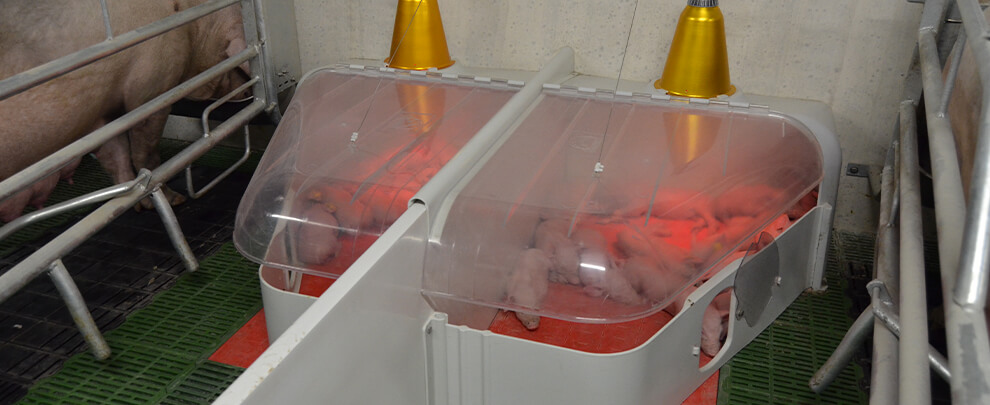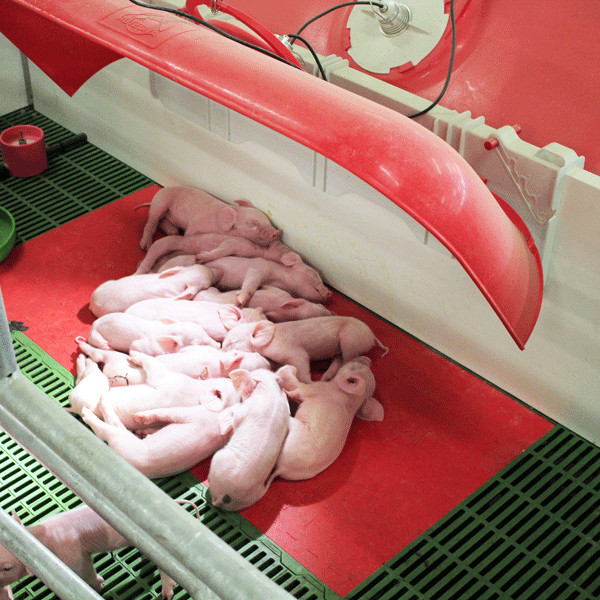Blog
Blog

What are the thermal needs of the piglet at birth?
24th May 2023 - News
Farms are conditioned by the quality of their facilities, as well as by the environmental characteristics of the place where they are located. These factors influence to a large extent the management conditions, animal welfare, final production and, obviously, the profitability of the farm. In this sense, it is necessary to have systems that guarantee the maximum comfort of the animals.
From the time they are born until they reach weaning, piglets have significant thermal demands due to their poor defense response capacity at intervals and thermal fluctuations in the environment. The newborn piglet is especially sensitive to cold and this sensitivity is in direct proportion to its birth weight. The lower the weight, the higher its thermal needs. The lack of an adequate weight, the little protection due to lack of hair or its low level of energy reserves condition that after birth there is a sharp drop in body temperature, greatly affected by the ambient temperature of the farrowing pen.
The piglet at birth does not have a developed hair system and its food reserves are limited. At the moment of birth, the temperature inside the maternal uterus is 39ºC to 40ºC, passing at birth to a variable temperature that will depend on the climatic season of the year. In this way, the thermal curve of the piglet experiences a sharp decrease during its first two hours of life to shortly recover the physiological level of 39ºC due to the consumption of its energy reserves. With this, if a control of the ambient temperature is not established quickly, these reserves are depleted, compromising the subsequent normal development of growth and survival of the animal.

A cover helps piglets to thermoregulate properly. Photo: Rotecna.
So, we must create a thermally adequate environment, in which the piglet is comfortable, without feeling cold, but cool so that it does not suffer heat stress. The thermal comfort of the piglet is closely related to the air and soil temperature, as well as the speed of the air, which affects the speed with which body heat is lost through convection and evaporation of the surrounding air. The environment created must maintain the body temperature at a normal 39ºC.
In this context, we must apply thermostable protection systems in the farrowing pen that prevent a sudden drop in body temperature during the first 24 hours of the piglet's life. In the absence of protection systems, such as a nest, the piglet is not capable of thermoregulating correctly, it does not feed adequately and, consequently, hypoglycemia can occur which, together with the decrease in ingested colostrum, could facilitate a decrease in immunity, with consequent growth retardation and higher mortality rates.
But apart from the factors related to metabolism and growth, the piglet will tend to seek heat by approaching the mother with the danger that this entails.
The piglet's sensation of cold is the consequence of an excessive increase in the process of body heat loss. Compensation is achieved through increased burning of food, specifically to create heat, and not as a metabolic consequence of normal growth. This process leads to slower growth due to less efficient feed conversion, with the associated loss of fat and muscle growth. In this context, the cold factor on the farm should be considered as the temperature at which pigs will divert nutrients from the normal process to achieve a body heat increase.








